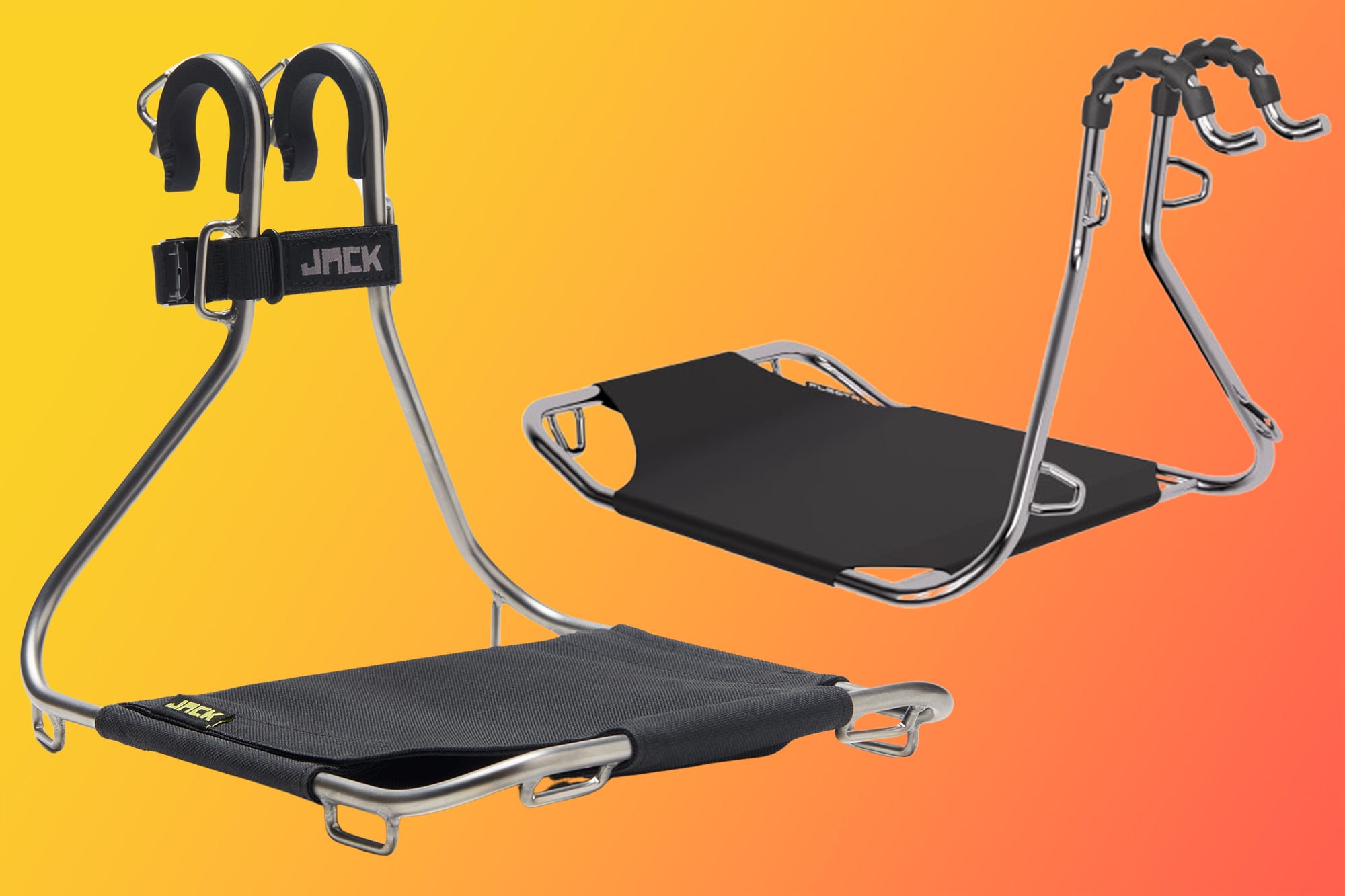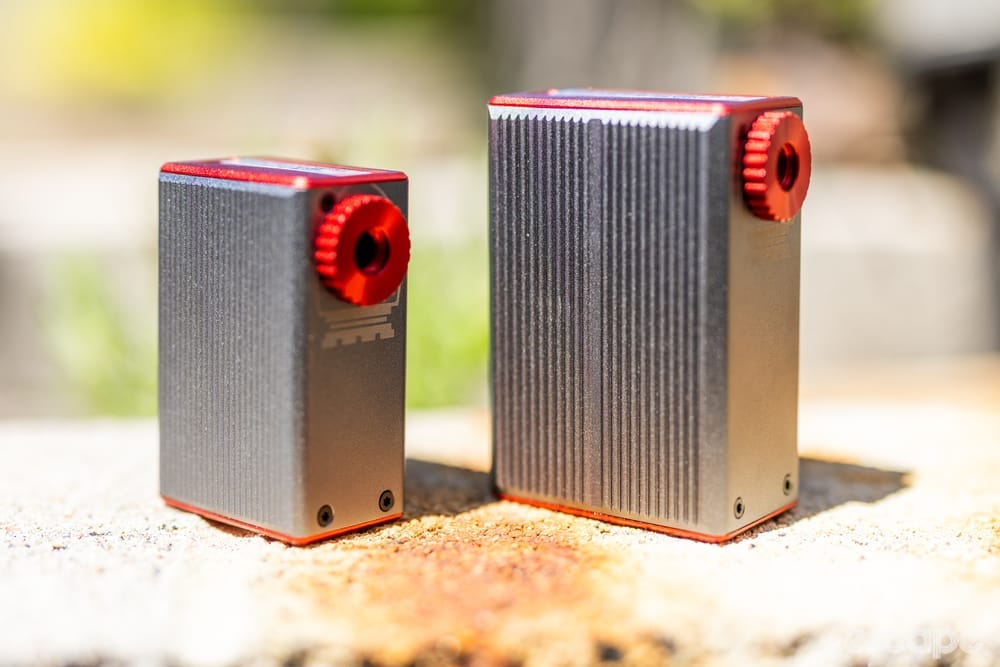It’d take a brave or visionary rider to suggest the original Gabba had a flaw or required an update. Such was its popularity that, like Kleenex or Xerox, Castelli's revelatory foul-weather top became the generalized name for a category it created 14 years ago when the Cervelo Test Team – including Gabriel "Gabba" Rasch – raced a wet, cold, and windy Kuurne-Brussel-Kuurne in an unidentified black, short-sleeved, rain .... thing, neither jersey nor jacket. It was a rare instance of a design that was nearly perfect from the start, and has had only had minor, mostly unnoticeable updates since. Meanwhile, practically every other brand has developed its own take on the “Gabba,” often even referring to such pieces as "our Gabba."
But now, through either bravery, vision, or perhaps just needing to differentiate its offering, Castelli has entirely reinvented the Gabba with the new Gabba R. Just like the first time around, the new Gabba R proposes a solution to a problem we knew existed but no one had cracked a solution to: aerodynamic rainwear.
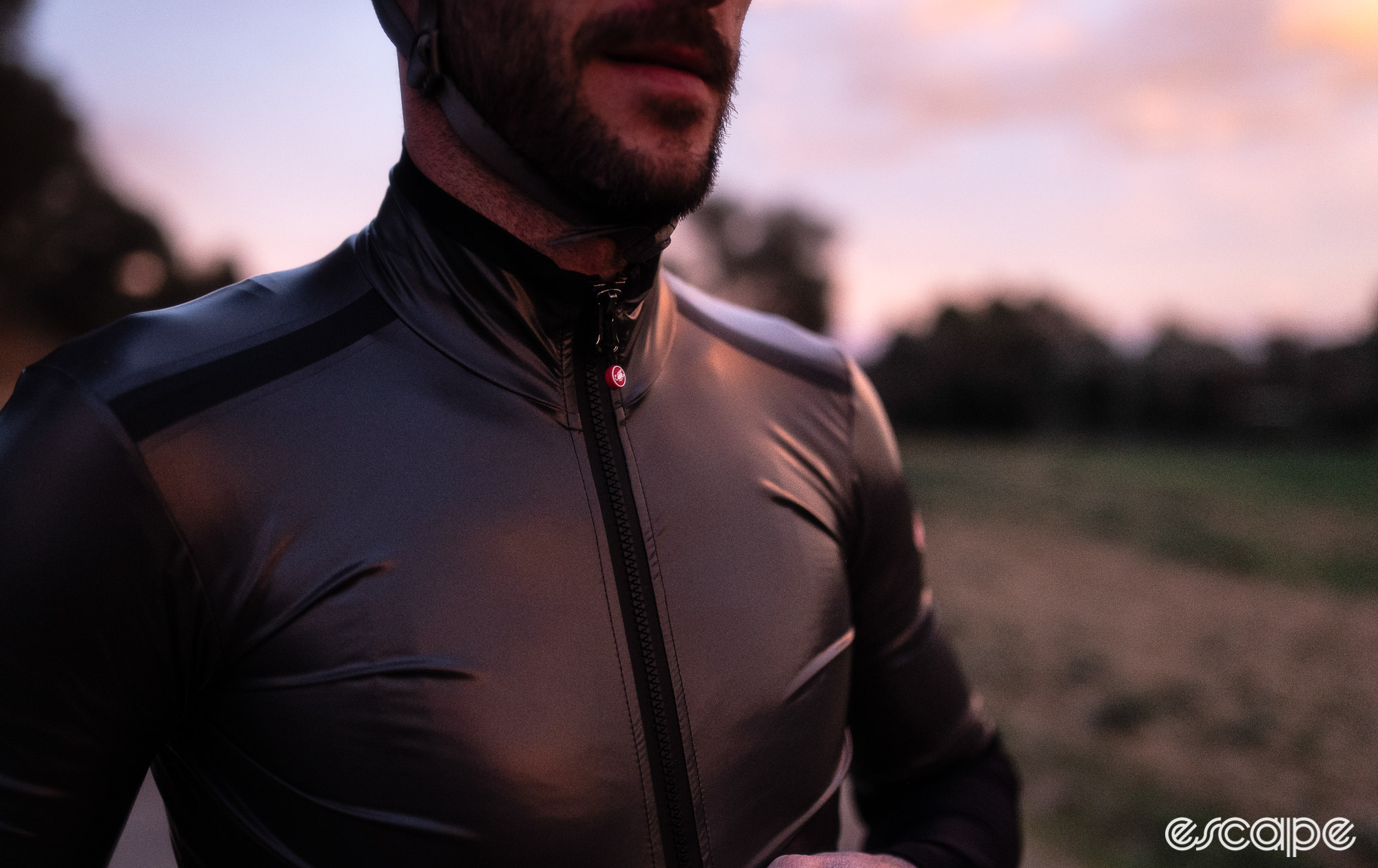
The new Gabba, technically the 6th generation but more like the first true Mark II, was conceived with speed and actually doing the job most of us mistakenly thought the original could in mind. It sure looks even wilder and different than its predecessor did, but in contrast to 14 years ago, its rollout and uptake in the peloton has been comparatively muted. So has Castelli once again revolutionised rainwear, or is it guilty of following suit with all those other brands looking for a new take on the original and still the best?
A brief history of Gabba
The biblical conditions of that 2010 Kuurne meant only 25 riders finished that race, I was one of the many DNFs exiting the race as part of a large group to abandon en masse at a feed zone shortly after a wind-swept wheelie bin wiped out Stijn Devolder mid-pack and gale-force gusts sent groups of riders across a dual carriageway central reservation. Oh, did I mention the temperature dropped some 8°C or so mid-race? It was wild!
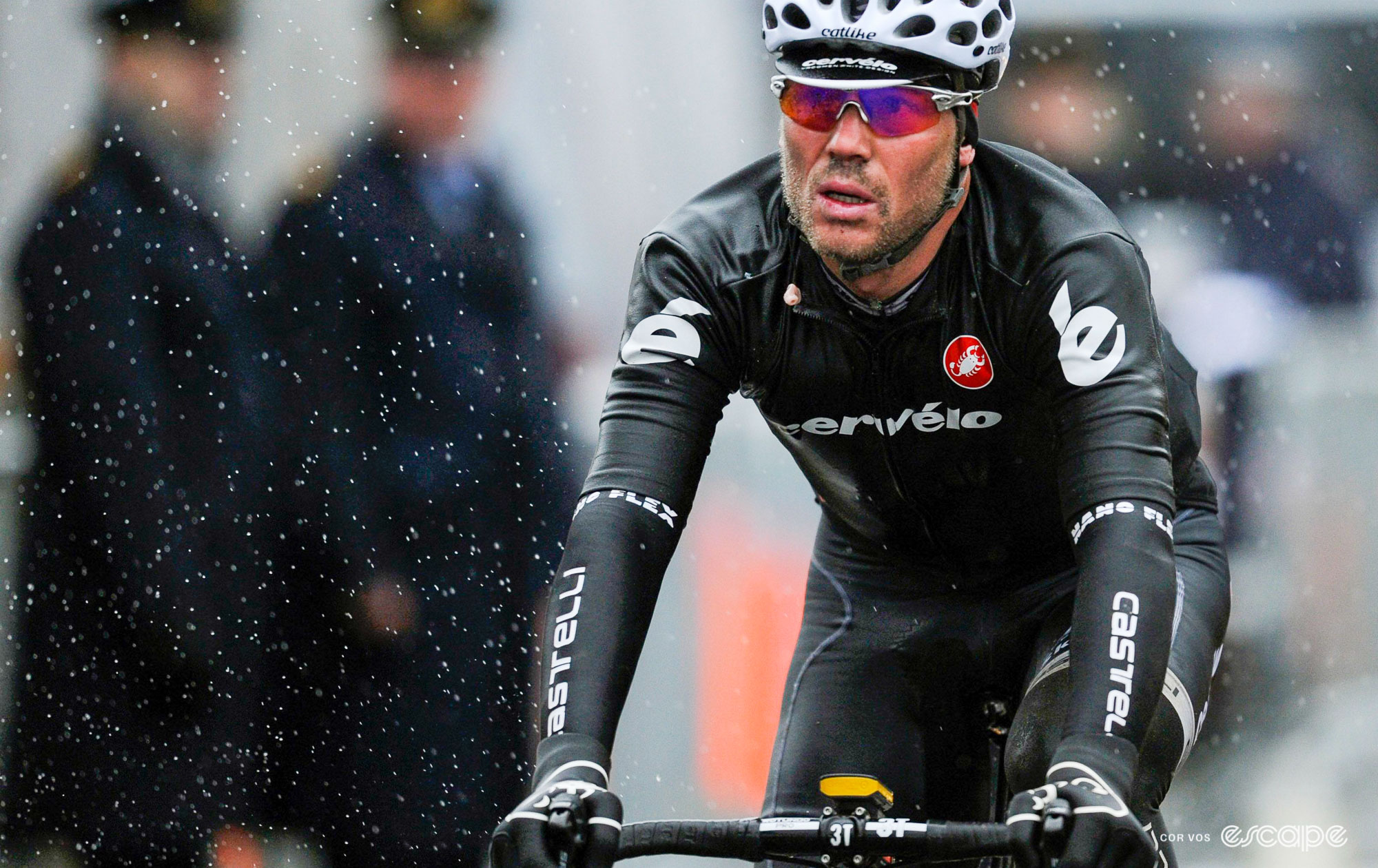
That edition of Kuurne has its place in legend, which usually ensures the winner of such races the same legendary status, but amidst the Gabba hype, it’s often forgotten that Cervelo (nor the Gabba) didn’t actually win that race. That honour went to Bobbie Traksel of Vacansoleil, who reported that he hadn’t yet regained feeling in his fingers a week or more later. Cervelo didn't even make the podium. As time would prove, Kuurne 2010’s new inductee to the stable of cycling legends was in fact “the Gabba” and the image of drenched Thor Hushovd dressed head to toe in black became the memory of that February day a decade ago … even for those in the race who have perhaps otherwise wiped those events from their memory.

Nobody knew what a Gabba was as the race rolled out that morning. It was an entirely new concept, a short-sleeved, figure-hugging, foul-weather top, not designed to keep rain out, but rather from an acceptance that the rider will get wet no matter what. The Gabba prioritised staying warm yet retaining breathability. Most importantly, it didn't resemble a parachute like practically every other rain jacket of the time.
A few hours later, the Gabba had attained “must-have” status in the peloton, a status it would retain for years to come.
Somewhat hilariously, it wasn’t Castelli’s marketing or sponsored teams that did the majority of the work in cementing the Gabba’s legendary status, but rather the fact that, through the rest of 2010 and later seasons, practically every other non-Castelli-sponsored rider and team were invariably spotted in blanked-out Gabbas any time the heavens opened on race day.
As more and more pros turned to the Gabba, so to did the general public. The Gabba became one of the best-selling cycling garments ever, and again, became a category of its own. But there in lies the peculiarity of the Gabba. Castelli developed it for foul-weather racing; it wasn’t the warmest option nor was it in any way waterproof, but the balance and breathability it offered even at race intensities meant it could keep a rider comfortable and ready to race like nothing that came before it.
With this race-setting use case in mind, Castelli admits it never expected the Gabba to become so globally popular amongst paying customers, but it did. In doing so, it was not only one of the most popular garments ever but arguably also one of the most misused. As good as the Gabba was, I can recall countless riders wearing it on wet training rides when a rain jacket would have proved much more appropriate.
Likewise, given it was among the first figure-hugging upper-body garments we’d ever seen, the Gabba had an sense of aerodynamics about it. While it certainly would have been faster than the flappy rain jackets of the day, in reality, it had probably fallen a long way behind the race suits of the modern peloton. Nobody is perfect, and so it was with these two shortcomings of the legend that Castelli set about developing the new Gabba R.
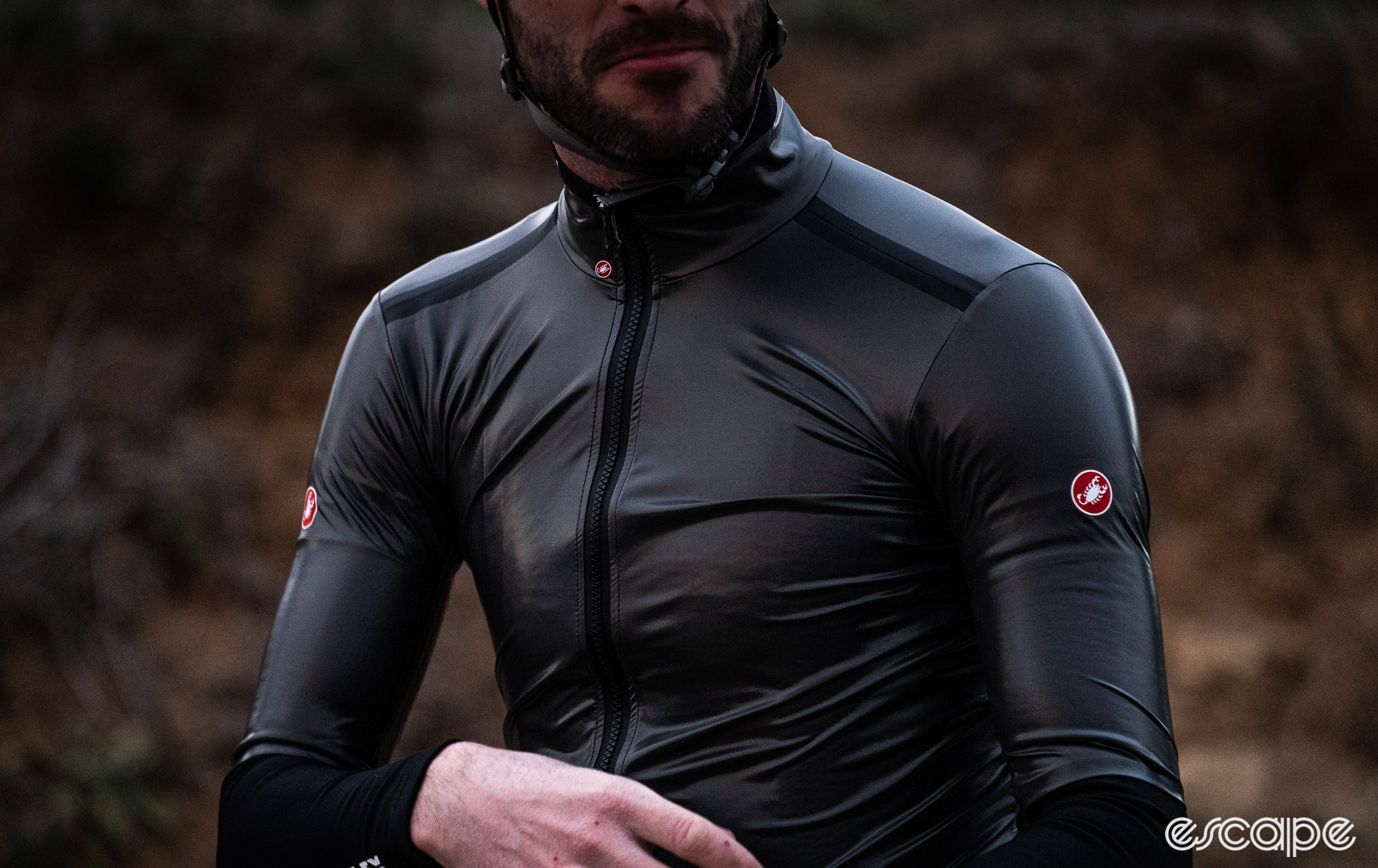
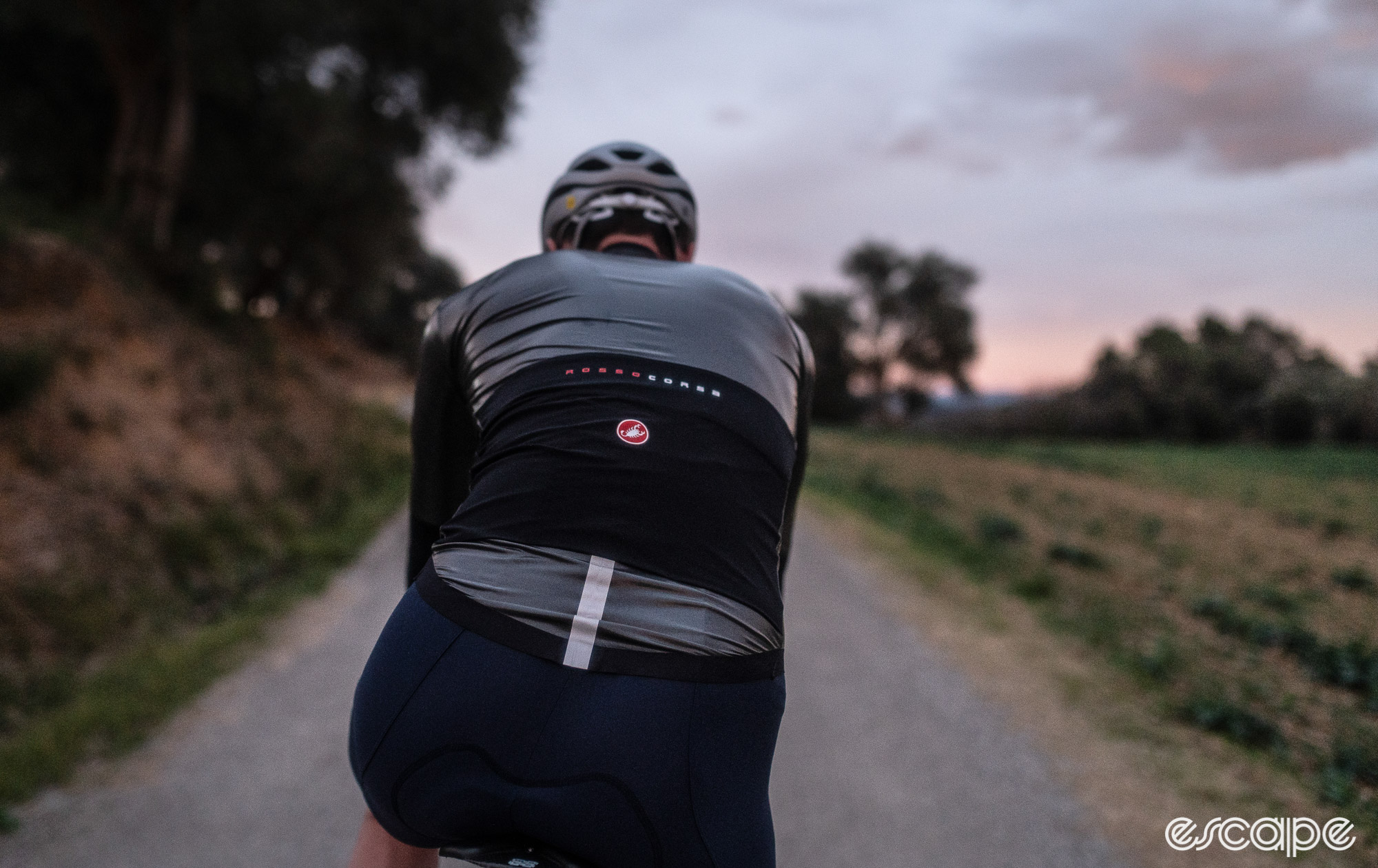
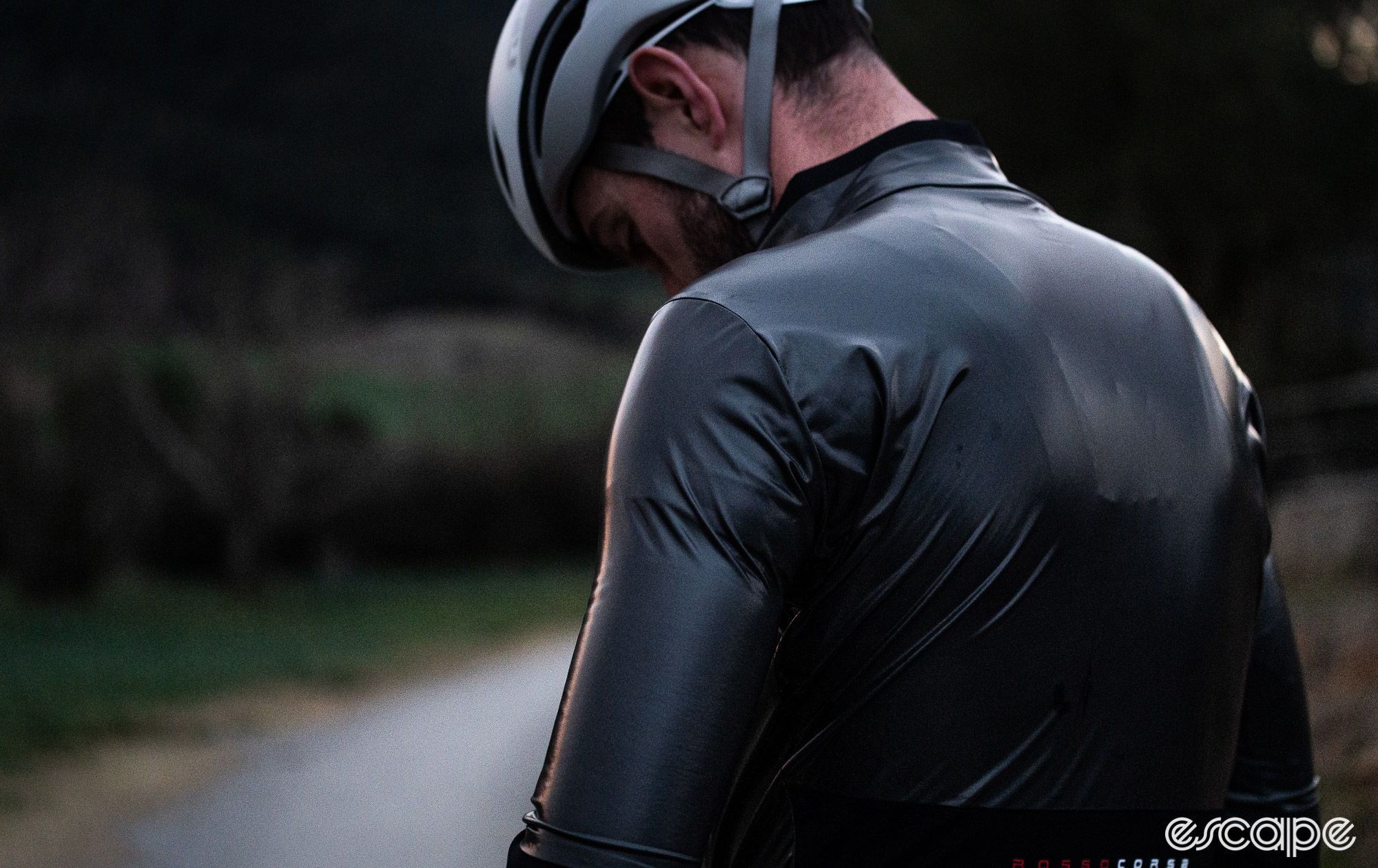
What next for a legend
Although the design brief remains the same – create a garment designed to keep riders comfortable when racing in foul-weather conditions – Castelli has taken an entirely new path with the Gabba R. That path is immediately obvious to even the most untrained eye, and is one that time and time again had training partners react recoil with some variation of “Is that from your s#x dungeon, Ronan?” If, to the untrained eye, the original Gabba was just a black cycling jersey, the Gabba R is very much a “WTF are you wearing?” kind of thing, even for cyclists accustomed to skin-tight aero race wear.
Replacing the old matte-finish fabric is a new ultra-stretchy, high-sheen, polyurethane membrane Gabba R. Aero-optimised and highly water-repellent, the Gabba R is very different from its predecessor but still retains the breathability that makes it race-intensity-appropriate.
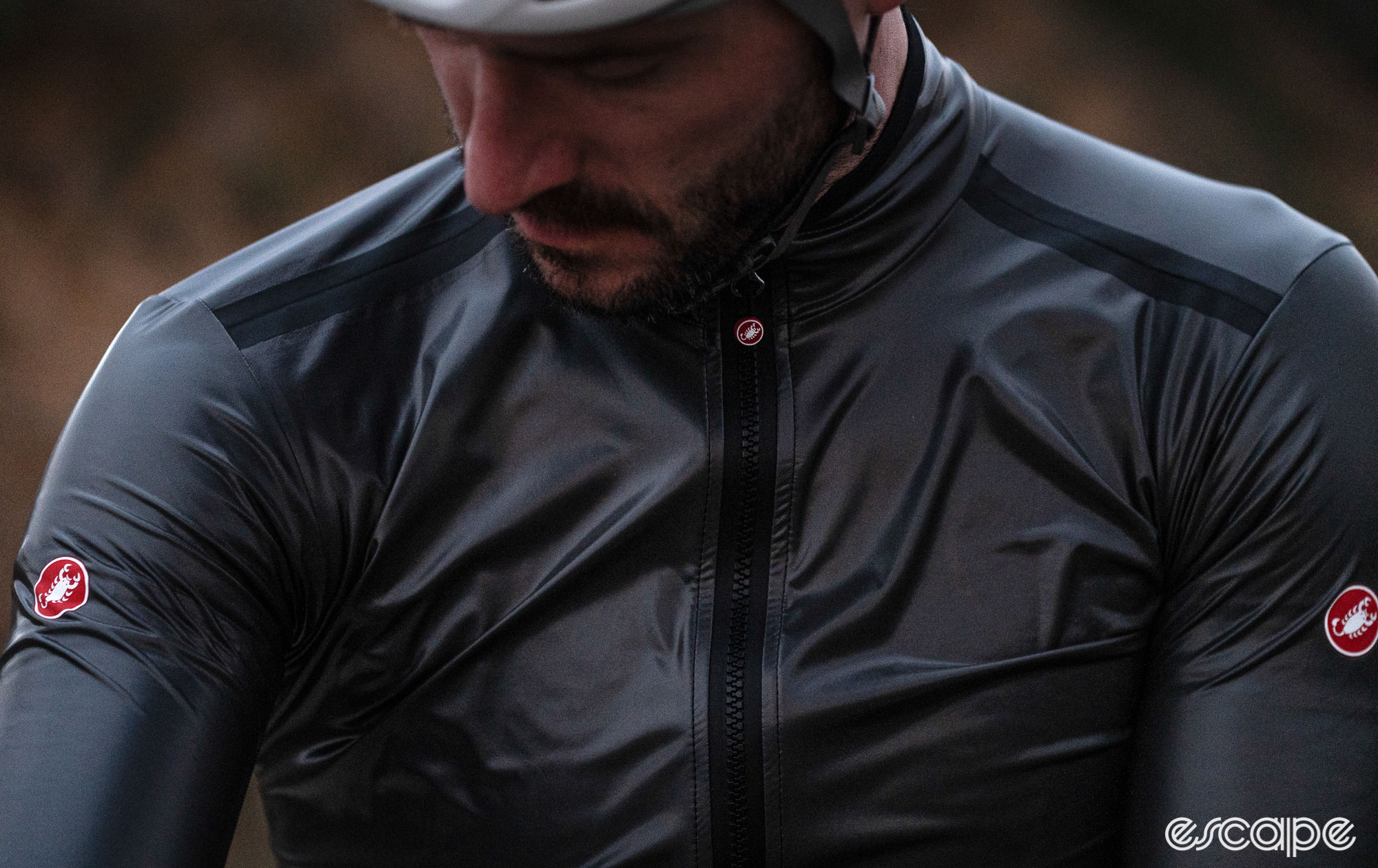
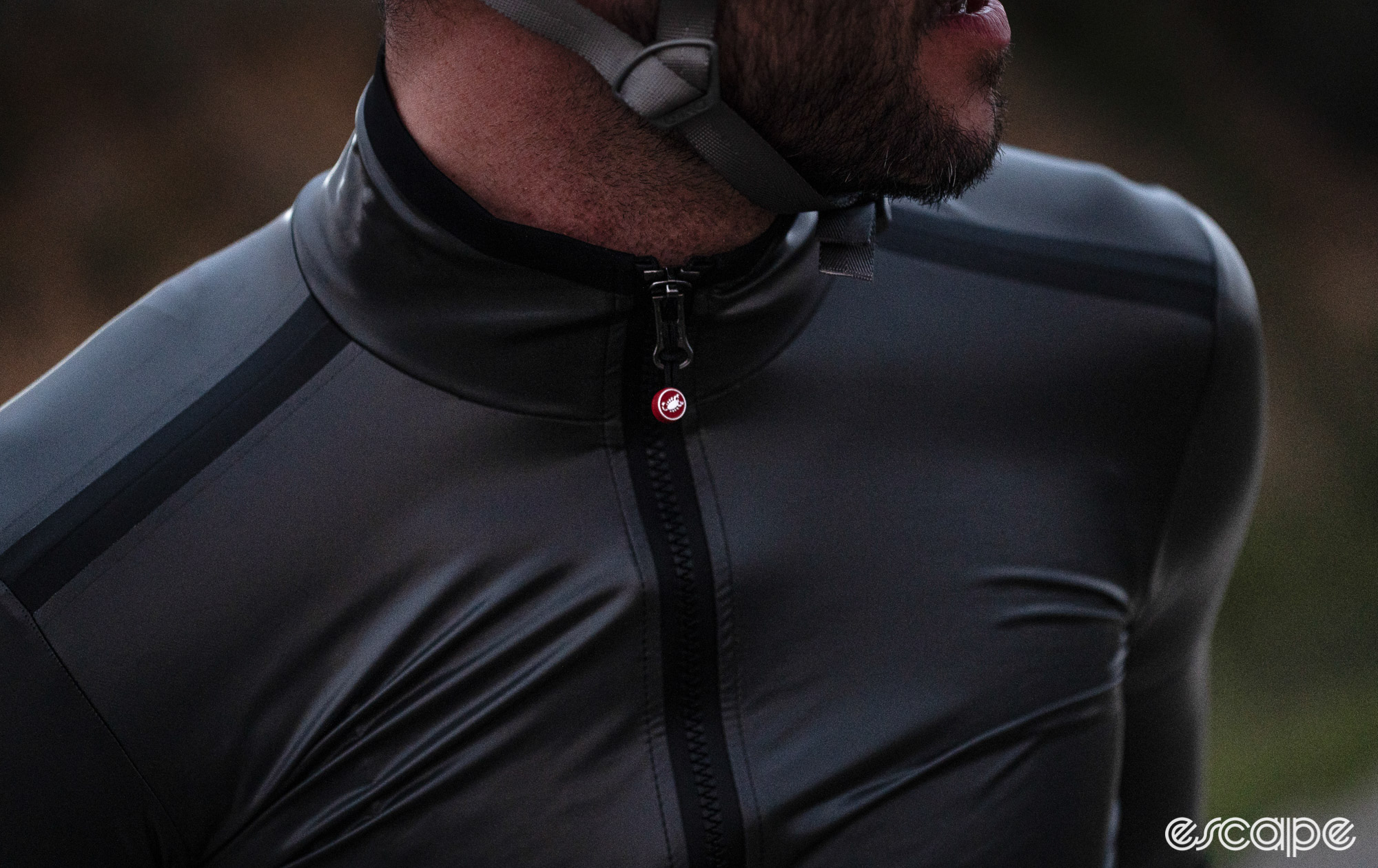
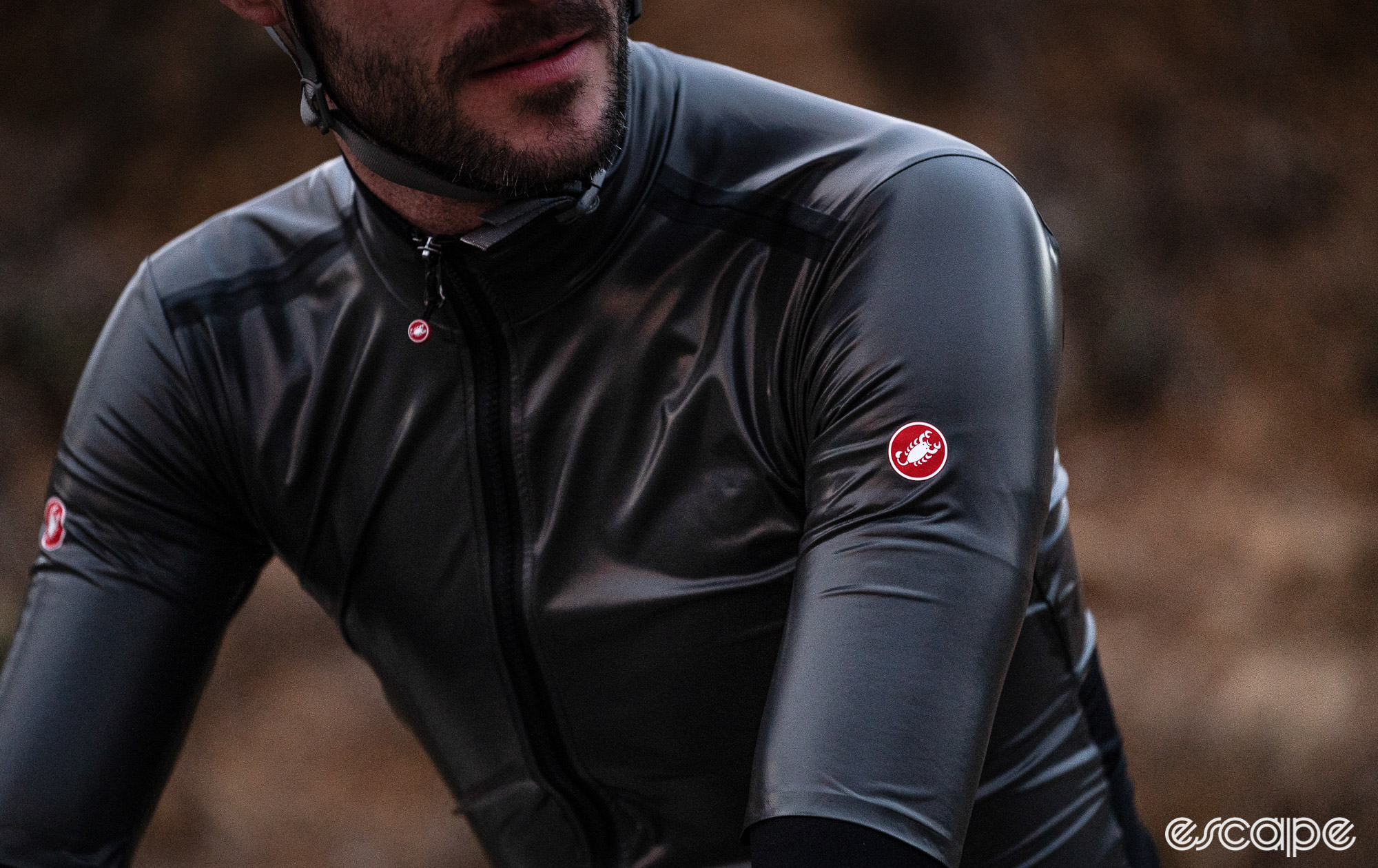
At the core of this new Gabba is that new membrane, licensed exclusively to Castelli from ITTTAI Performance Fabrics, who, as the name suggests, are a “performance fabric innovation leader.” The membrane is said to offer these seemingly conflicting stretchy, water-repellent, and breathable attributes thanks to a microporous polyurethane hydro-spun external membrane. In simpler terms, it’s a two-way condom for your torso.
The Gabba R gets even more figure-hugging than its older siblings, and is also available with either long- or short-sleeve options. Where the new Gabba is different, though, is that Castelli claims it is, as already mentioned, more water repellent and also quite aerodynamic. In fact, not just more aerodynamic than the old Gabba or a flappy rain jacket, but the Italian brand points to wind tunnel testing results that suggest the new Gabba R, worn over the brand’s Sanremo BTW one-piece aero race suit is actually faster compared to the same rider, in the same "normal road" position, in just the race suit. To which my initial reaction was, "No chance!"
Castelli claims it has validated these results with real-world and follow-up wind tunnel testing, putting the new Gabba at a claimed 1% faster than just the Sanremo suit in that “normal” position at speeds between 37-50 km/h. That's a phenomenal result if true. That said, there's an important caveat from that follow-up testing: Having the rider drop into an “aggressive position” swings the results back in favour of just the Sanremo suit, again by about 1%.
Crucially, though, Castelli set about making a fast foul-weather jersey/jacket and talk of 1% swings either way, sure seems like they achieved that. Compared to the outgoing Gabba, Castelli puts the saving at around 2.5% at 40 km/h for the short-sleeve version. That difference extends out to 3.5% for the new long-sleeved Gabba R versus the Perfetto RoS and 4.5% versus the Slicker Pro rain jacket.
That said, all the usual caveats and pinches of salt still apply to claims arising from both wind tunnel testing and a manufacturer's own testing; nevertheless, clearly, Castelli has done a lot of testing. Castelli even admits that while it set out to develop a more aerodynamically efficient Gabba, it was as surprised as anyone with the results it found.
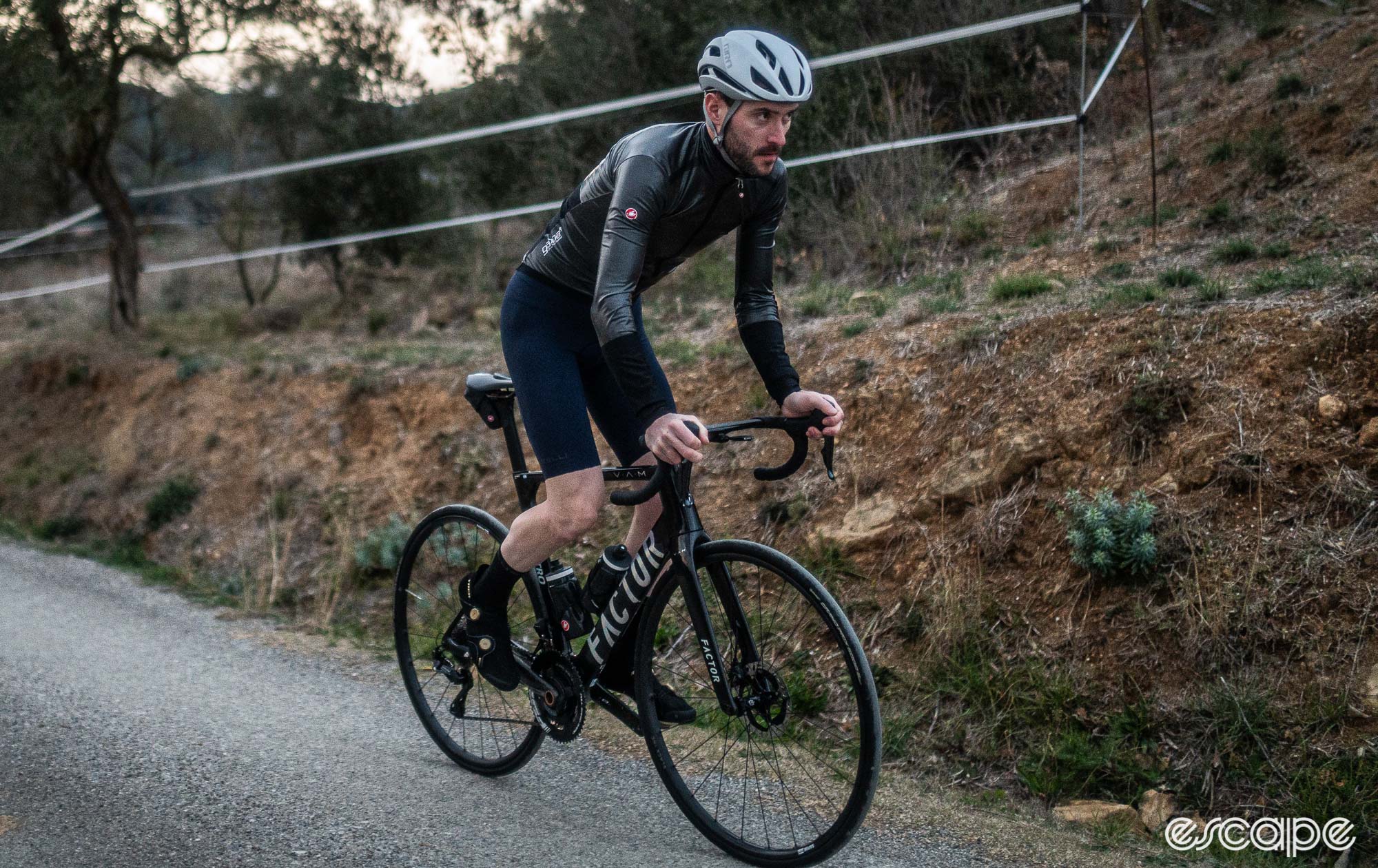
How the Gabba got slippery
Wind tunnel testing doesn’t tell us how or why something is faster or slower; we need computational fluid dynamics (CFD) for that, and experts suggest CFD is not yet at a place where we can confidently simulate fabric aerodynamics at cycling speeds. That said, we can make some assumptions about what might make it fast.
Chief among those assumptions must be the fabric and fit. The figure-hugging, 1980s-esque skin suit material is similar in appearance to the latex-coated skin suits making a comeback in both track and time trials of late. It’s breathable but much less porous than the original Gabba. It’s tacky but slippy when wet, much more like a material you’d expect in an aero or rain overshoe than a jersey, but damn it just looks slippery and much like those 1980’s skin suits, which makes sense to the “eyeball wind tunnel.”
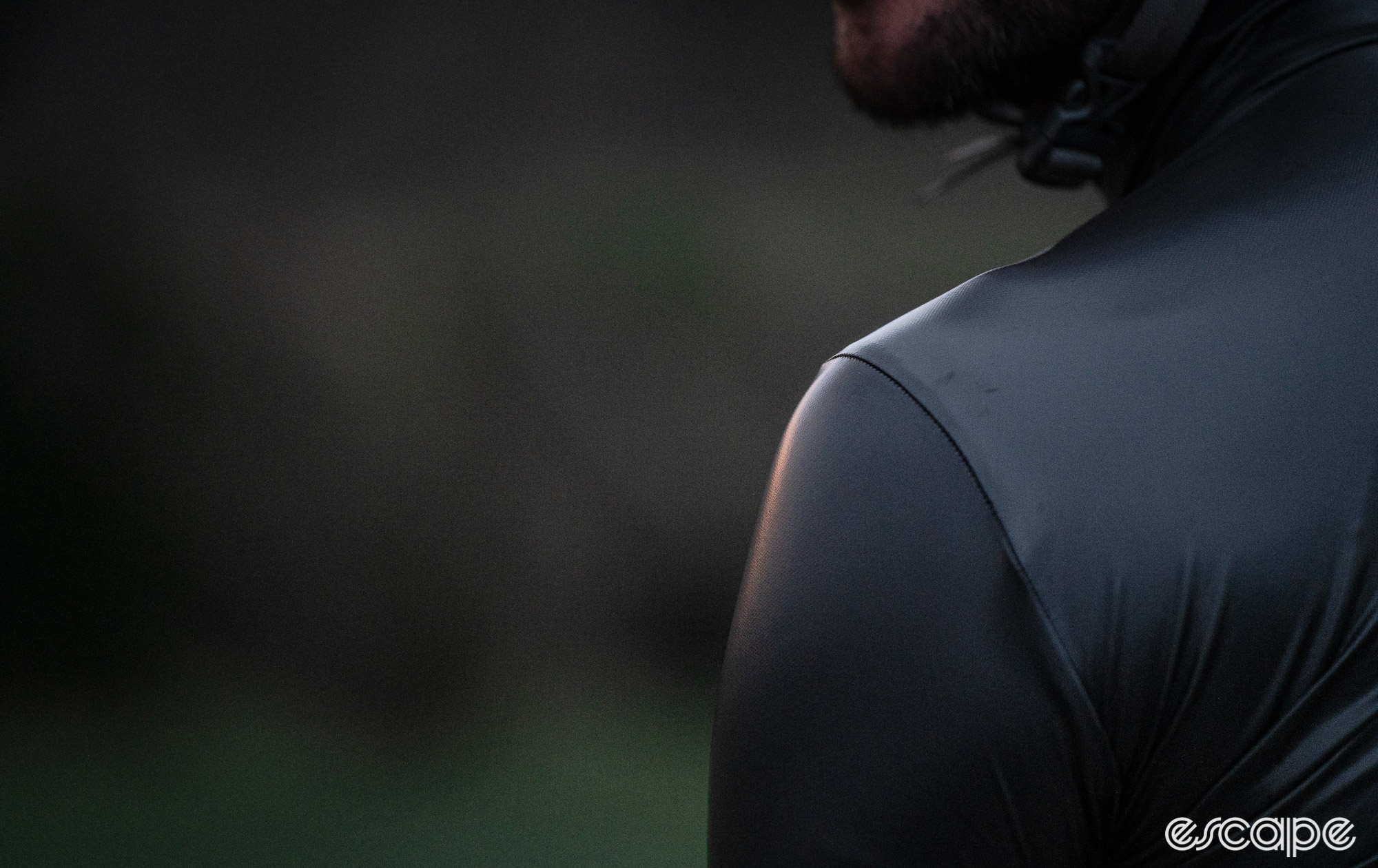
Furthermore, Castelli designers reduced the number of seams and only partially taped them, adding water repellency where required but increasing breathability in locations it expected to see much less water ingress. Crucially, though, as seems to make intuitive sense, a garment with fewer seams and a closer fit should prove a little more aerodynamic.
The answer may even lie with the base layer beneath the Gabba R itself and simply unlocked by the Gabba R’s condom-esque properties.
Aero base layers are hardly news; they’ve been used in the pro peloton for close to half a decade and came about following the UCI’s intervention to ban/limit vortex-generators or textures on a garment's external surface. That specific example of the UCI's tendency for a knee-jerk reaction stemmed from Castelli’s vortex-generator skin suits, which were quickly outlawed after Team Sky used in them in the prologue of the 2018 TDF.
The ban on external surface textures forced Castelli and other apparel brands to turn their eyes to mimicking a similar aero aid by adding textures and trip strips to the base layer (think internal surface), which could then protrude through the jersey fabric and create a similar aerodynamic drag-reducing effect. Long story short, Castelli claims to have observed testing results that suggest adding those textures under a smooth jersey or skin suit fabric can prove much more powerful than simply adding them to the external surface.
If true, the UCI's decision inadvertently directed the aero-nerds down a more fruitful path. Steve Smith, global brand manager at Castelli, offers the golf ball dimple as an analogy to this micro smoothness / macro structures concept. While the aerodynamic effects of a golf ball's dimples have been cited to within an inch of the 18th hole, Smith points to the often-overlooked smoothness of the golf ball as being as critical as the dimples in making the package work in that scenario.
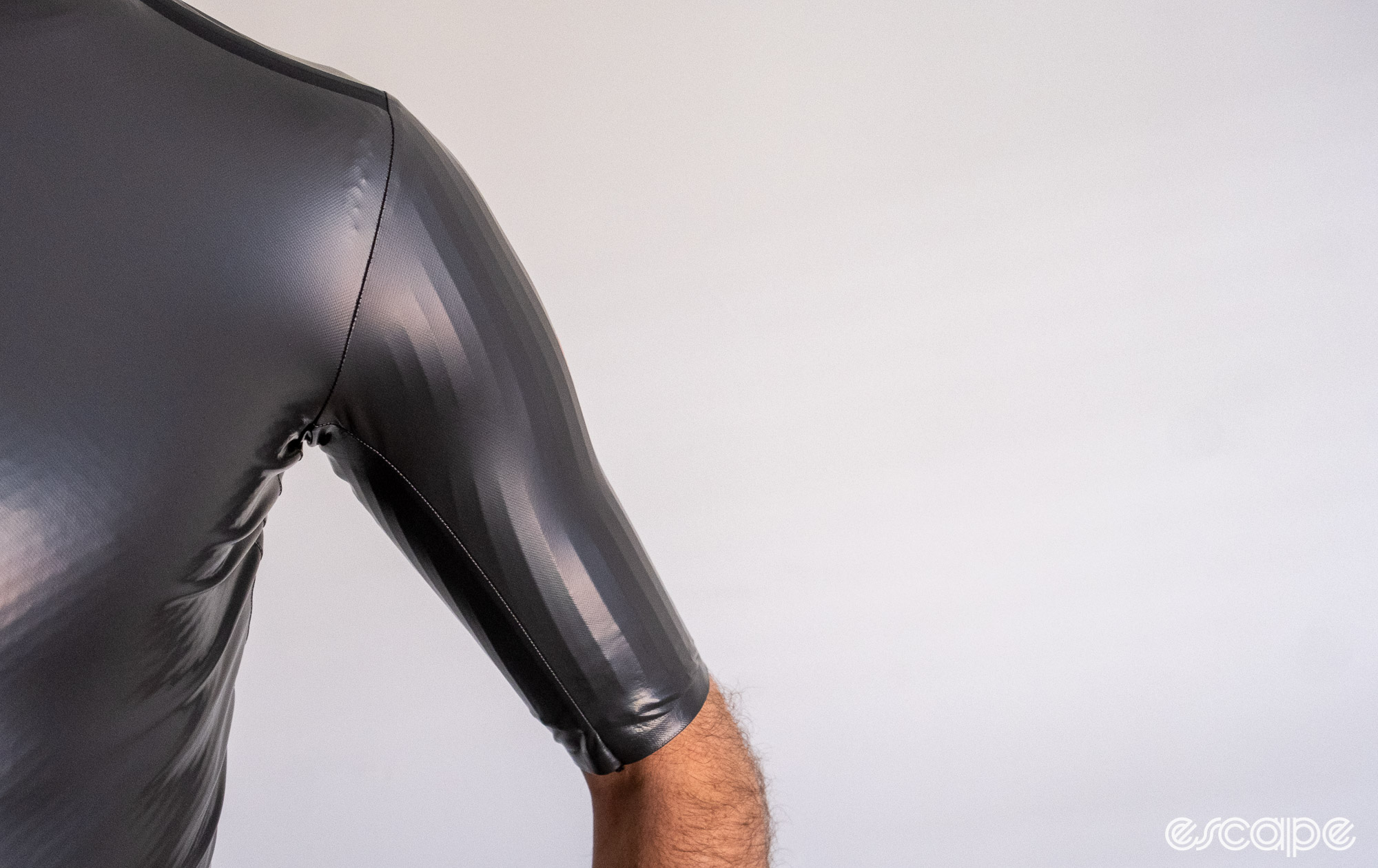

So, bearing that in mind, I feel enlightened in observing how prominent an aero base layer’s trip strips protrude through the high-sheen, ultra-smooth fabric on the Gabba R when adding said base layer even under a standard jersey under a Gabba R. The result is all the more prominent without the jersey mid-layer. Again, it all makes sense in the eyeball wind tunnel.
But a Gabba can’t just be aero; Since its inception, it has been designed to be the garment to keep riders comfortable in the “foulest weather conditions.” It’s worth bearing this in mind when considering the aerodynamic claims. The obvious reaction is to ask: If it's so fast, will we see pros racing in the Gabba R even on dry days? The answer is no, for a few simple reasons.
First, as Castelli explained, the aero improvement over the BTW race suit is tested in the “normal,” more-upright position. Aero always matters, but it matters most when making race-winning efforts. Typically said efforts see the rider adopt a more aggressive and naturally more aerodynamic position. Either intentionally or intuitively, we all just adopt a more aggressive position when we go hard and tested in this position, the Gabba R falls behind the race suit-only results. That’s not a criticism, but it is a reminder the Gabba R comes into its own aerodynamically when compared to the existing wet weather offerings, not in comparison to a race suit.
Secondly, and perhaps more importantly, as breathable as the Gabba R may be compared to a rain jacket, it is not a warm or dry weather garment. In fact, it’s not even a cold weather jersey/jacket as we will get to in a bit, but nevertheless, it is not as breathable as a true jersey or race suit. The side effects from a lack of breathability or overheating likely to occur from wearing a “foul-weather” garment on a fair-weather day will far and away eclipse any potential benefit from the aero gains in a normal position. Again, not a criticism of the Gabba R, just a reminder of its intended use case.
As for that foul-weather performance, Castelli has added a waterproof YKK zipper, a high collar, and a tail on the rear for a little additional protection in addition to that new membrane. To be clear, there is no additional thermal protection or fleece lining, though, which makes sense given that this is a race-focused garment rather than a winter training item.
Enough theory; what do we think of it?
So, with aero and thermo-regulation expectations set, how did I actually find the Gabba R?
I’ll skip right to the end here, as I can confidently say that Castelli has once again created a must-have garment for the competition-focused rider. Again, it's a solution to a problem I knew existed but probably just accepted or didn't realise a solution was available. Gabba garments aren't waterproof or repellent and rain jackets aren't breathable or aero. The Gabba R addresses those issues, but there are some caveats, you’ll have to read on to get those.
The Gabba R has become the obvious go-to jersey and jacket for those wet days with intervals on the schedule where I’d quickly overheat in a true rain jacket, but quickly soak through with other jersey options. But this is 2024, and I don't road race anymore, so the Gabba R is not so much a difference between performance or hyperthermia as the original was and more so a decision-making factor between riding outdoors or hopping on the indoor trainer. On a few occasions, the Gabba R’s versatility has seen me venturing outdoors for such sessions when I might otherwise have opted for the indoor session.
The intervals and intensity are key here. I wouldn’t opt solely for the Gabba R for a wet, low intensity, endurance ride; A proper rain jacket is still king there, especially on colder days given the Gabba R features no additional thermal protection. But for those training intervals where one can quickly overheat, especially on climbs, the Gabba R has really come into its own.
It is much more water resistant than the original, to the point I’ve come home with a dry base layer after a one-hour ride with passing showers or constant drizzle and where my bibs and socks are soaked through. I even survived an almighty downpour resulting in flash flooding for the final 10 minutes of a ride on one occasion. Rain just seems to bead up and run off the new material. I assume it will overwhelm quicker than a true rain jacket, but I haven’t found myself in those conditions often enough for a true comparison test.
But crucially, it is also much more breathable than a rain jacket. Again, to be clear, it is not as breathable as a typical jersey, but for these wet rides littered with intervals, the new Gabba is the new “only option” in my closet. Granted, there are times I need to open and close the zip between efforts to aid the breathability, especially on hill repeats, but I’m fine with that.
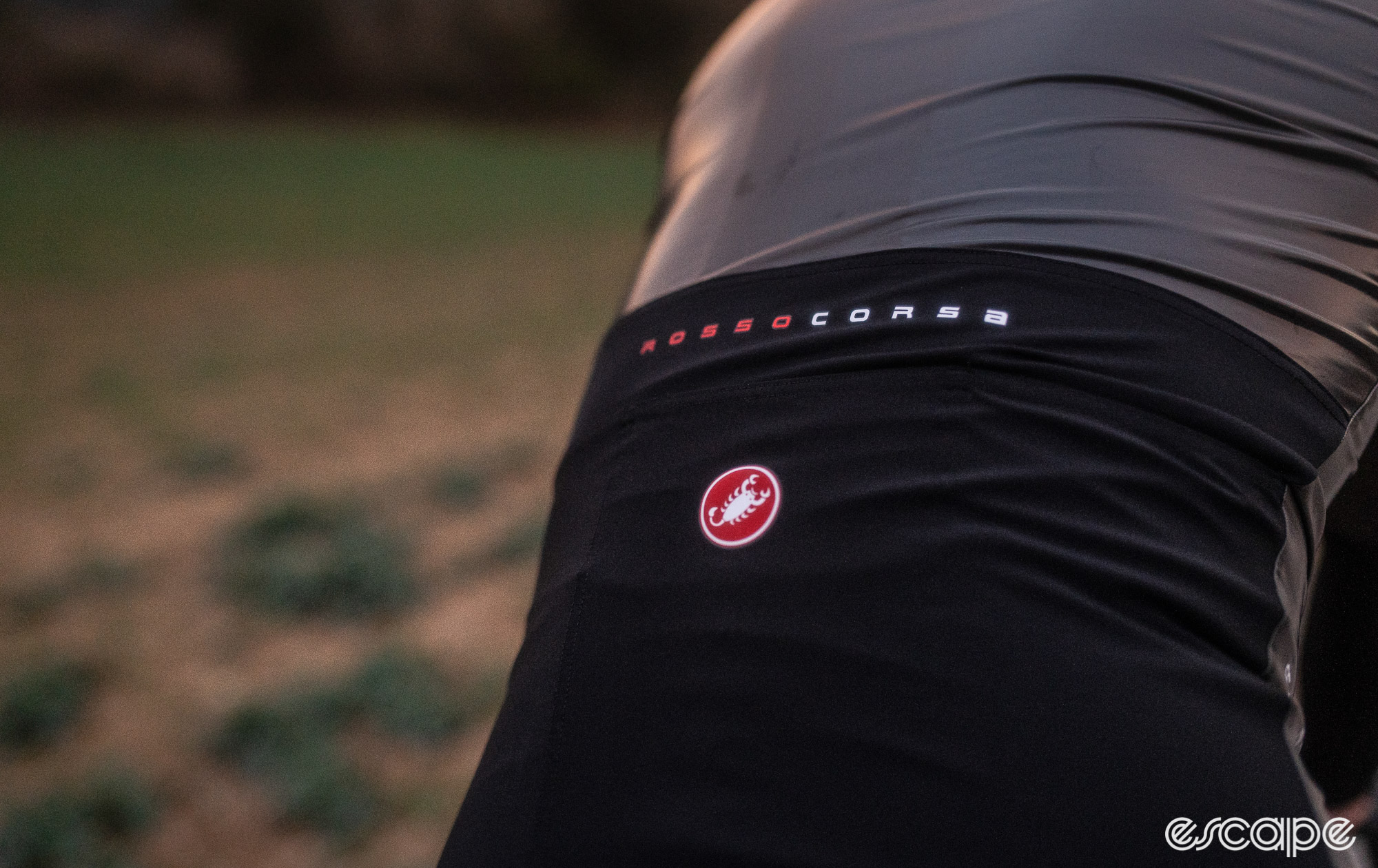
While I haven’t observed any nicks or cuts just yet, I had the feeling the new material is exceptionally fragile. The Gabba R is, however, proving that feeling wrong so far. Castelli has also nailed the pockets, using an alternative material it has delivered pockets that are accessible and don’t bunch up when trying to load something into them. Decent pockets are so underrated!
The Gabba R is not without flaw, though. One of the questions I asked at the presentation is why the tail doesn’t have a gripper. I’d envisaged it would simply ride up my back and not be in position to carry out its role in protective my rear end from spray. Castelli explained that adding a gripper would simply ensure the tail would get stuck in the upper position and by not adding a gripper it has the freedom to slip back down into its intended position. In reality, I’ve found it just gets stuck out of position anyway, and a gripper or reshaping might help it stay were it ought to be.
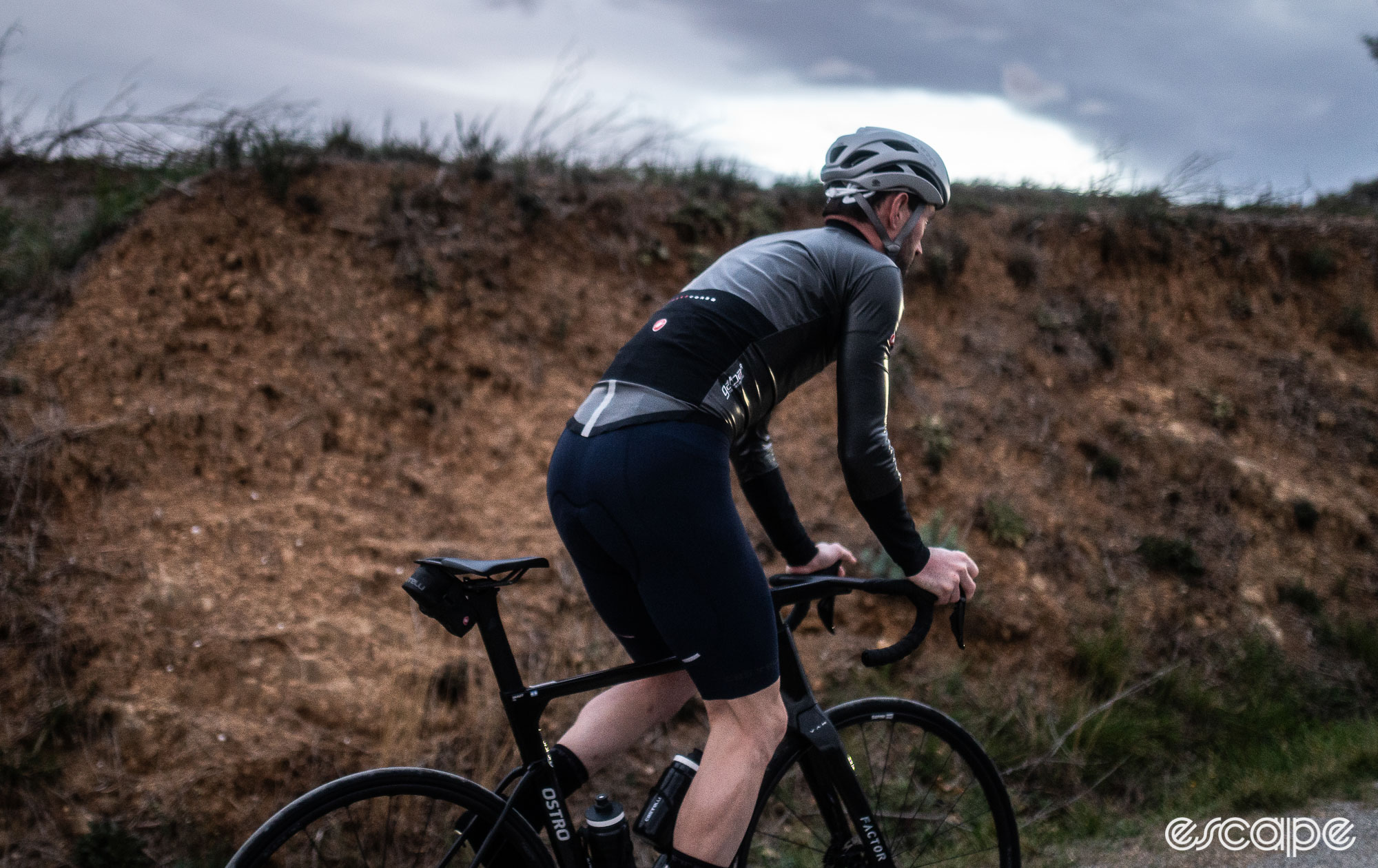
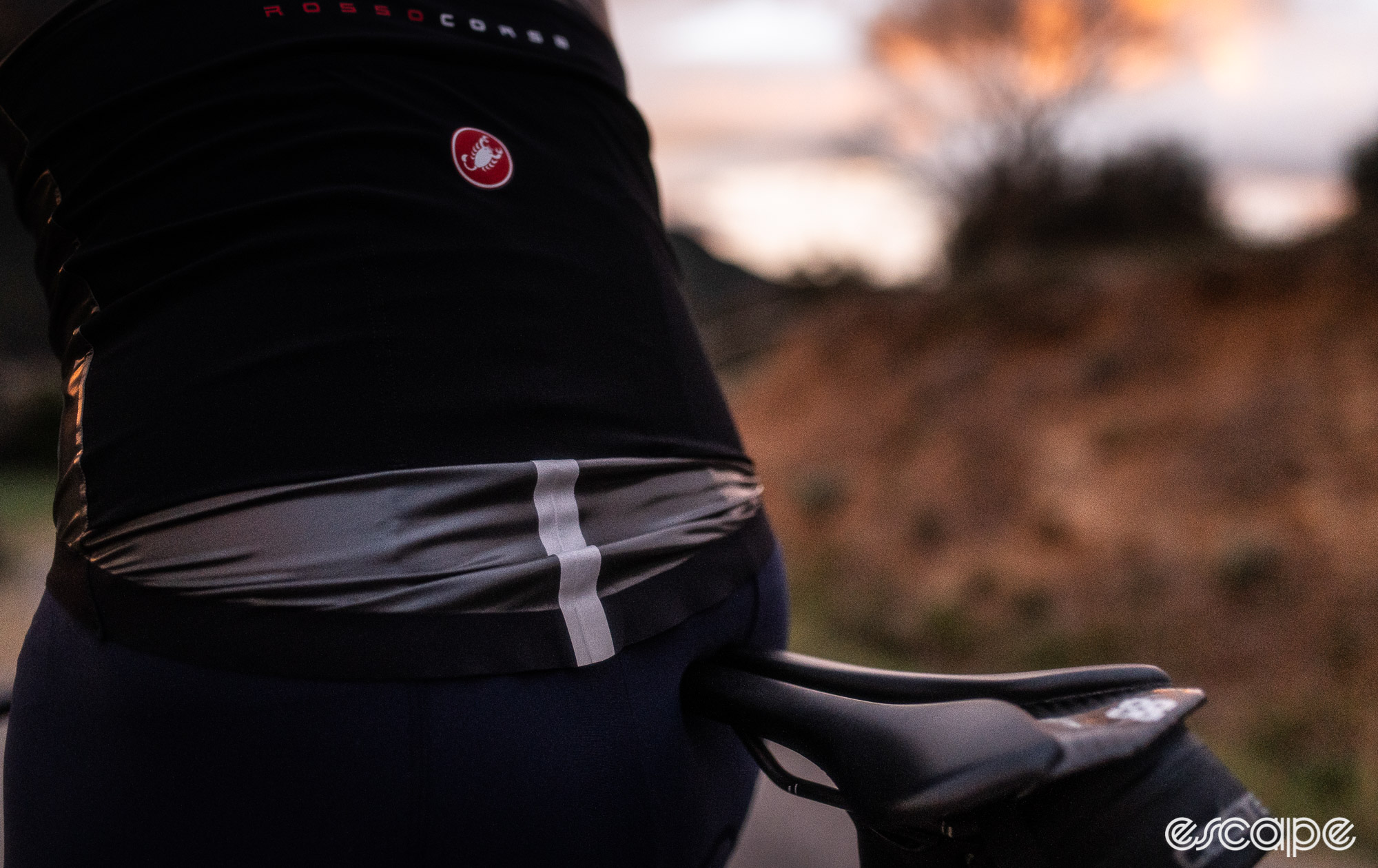
That gets to the aero claims. I haven’t aero-tested the Gabba R for the simple reason that while I believe it could test faster, it still wrinkles up in use. It may well test faster than a BTW in a normal position, but I just don’t see a way to repeatedly test such comparisons back to back when both Gabba R and pretty much every rain jacket will introduce varying degrees of practically unrepeatable “wrinklage."
The R is also very tacky, it’s fine to get on pre-ride in the comfort of your own home, but as I found out at my own expense, it can take up to three people to get one person’s arms through the exceptionally sticky arms of the long sleeve at the top of a cold and wet climb. That's a difficulty made all the more challenging if one had pulled the sleeves inside out in removing the jacket earlier that day.
Again, though, the Gabba R is a jersey, not a rain jacket, and so it is not designed to be added and removed multiple times throughout a ride. Castelli focused on improving the aero to remove the anxiety and requirement to remove a draggy outer layer approaching the finish line. A rider might still want to remove it as a race or ride speeds up, but if they do, my experience suggests they won’t be getting it back on.
Finally, there is the price, which, at €259,95 for the short sleeve Gabba R and €299,95 for the long sleeve Gabba R Jacket, is not cheap. It’s on par for what we have reluctantly come to expect for high-end rainwear of late and only a slight increase on the Gabba Ros, but it is a hefty outlay for a garment most at home in race conditions where it is also most likely to get destroyed, given that racing in the rain is the very conditions most conducive to crashing. While I know I’d want the Gabba R for such race days, I can only imagine the torment of shredding it.
Luckily, I don’t race so much anymore, but I do still like to train with plenty of structure. As mentioned above, the Gabba R certainly delivers on those wet training days, whether such usage can make it value for money will come down to how willing you are to pick the Gabba over the trainer.
Conclusion
Ultimately, the new Gabba R is not for everyone, but neither was the original, and that didn't hamper its popularity. Castelli lucked out with that first-gen Gabba, unveiling it to the world 14 years ago amidst a perfect storm of an unforecasted but literally perfectly timed storm that hit mid-semi-classic race, leaving every rider bar those on that iconic Cervelo Test Team grossly ill-prepared and dropping out as the Thor Hushovds et al. in the strange black jackets amassed on the front of a dwindling peloton to put the Gabba at the forefront of everyone’s mind.
That jacket on that day created a new category. Arguably, the new Gabba R is a better, more well-rounded garment. It's much more versatile and provides actual water repellency but, unfortunately for Castelli, lightning doesn't strike twice. There was to be no 2024 foul-weather classic and there was no rush, yet, on the new Gabba R. It was even notable by its relatively low appearance rate during the foul-weather stages at the Giro just last week, perhaps an indication that its difficulty to add and remove had riders erring on the side of caution with what is still a new garment to most of them.
Perhaps its time is yet to come, though. The aero claims have me wondering what learnings Castelli will take from the Gabba R development into its other more aero-focused race suits, skin suits, and other accessories. In the meantime, perhaps 2025 will bring the right (read: wrong) conditions on the right day for a Gabba R-clad winner of a spring classic to kickstart a new rush on Gabbas within the pro peloton. Only then will we truly know if the mass market can get comfortable with the Gabba R’s WTF-inducing looks.
Did we do a good job with this story?



